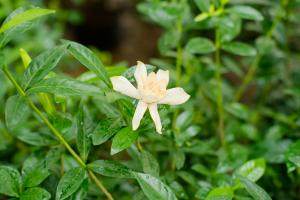How Many Banana Trees Can Be Planted in One Acre
When it comes to planting banana trees, there are various factors that must be taken into consideration. One of the most critical factors is the number of trees that can be planted in one acre. Knowing this essential piece of information is vital for farmers who plan to cultivate bananas for commercial purposes.
Factors Affecting Banana Tree Density
There are several variables that determine the density of banana trees in one acre. The first factor is the type of banana cultivar. Various cultivars have different growth habits that dictate how close they can be spaced to achieve optimal yields. The second factor is the size and viability of the land. The soil's texture, drainage, depth, and its nutrient levels will play an important role in how well the banana trees will grow. The third factor is the climate conditions of the area. The temperature, humidity, and amount of sunlight will impact the growth and fruit production of the banana trees.
Density Guidelines for Banana Trees
There is no one-size-fits-all formula for determining the number of banana trees that should be planted in one acre. However, there are some general guidelines that farmers can follow to optimize growth and yield. For dwarf cultivars, which are the most popular commercial bananas, planting at a density of 1,600 to 2,000 plants per acre is ideal. For taller cultivars, plant at approximately 1,000 to 1,200 plants per acre as their canopies will be much larger.
Spacing Recommendations for Banana Trees
The spacing of the banana trees also has a significant impact on their growth and productivity. The recommended spacing varies depending on the cultivar and the farmer's preferences. For most banana cultivars, planting them 10 feet apart in rows that are 16-20 feet apart provides enough space for the tree's roots to develop and allows for adequate sunlight and air circulation. This distance also allows farmers to drive through the rows when spraying pesticides or checking on the trees.
Benefits of Ideal Density and Spacing
Optimal density and spacing are crucial for growing quality bananas. An adequately spaced banana plantation guarantees sufficient space for the trees to grow and develop sturdy trunks and healthy bunches, decreasing the risk of the plants collapsing due to high winds or heavy fruit weight. Furthermore, ideal spacing helps to prevent soil degradation, providing enough sunlight and aeration, which result in better quality and higher yields of fruit.
Conclusion
Planting banana trees is an essential agricultural activity across the world, both for commercial and personal purposes. Knowing how many trees to plant in a given acreage and how to space them suitably is essential for growing high-quality fruit and maximizing yields. By maintaining the recommended banana tree density and spacing, farmers can efficiently cultivate healthy and abundant crops, ultimately benefitting the entire community.

 how many times do yo...
how many times do yo... how many planted tre...
how many planted tre... how many pine trees ...
how many pine trees ... how many pecan trees...
how many pecan trees... how many plants comp...
how many plants comp... how many plants can ...
how many plants can ... how many plants and ...
how many plants and ... how many pepper plan...
how many pepper plan...
































